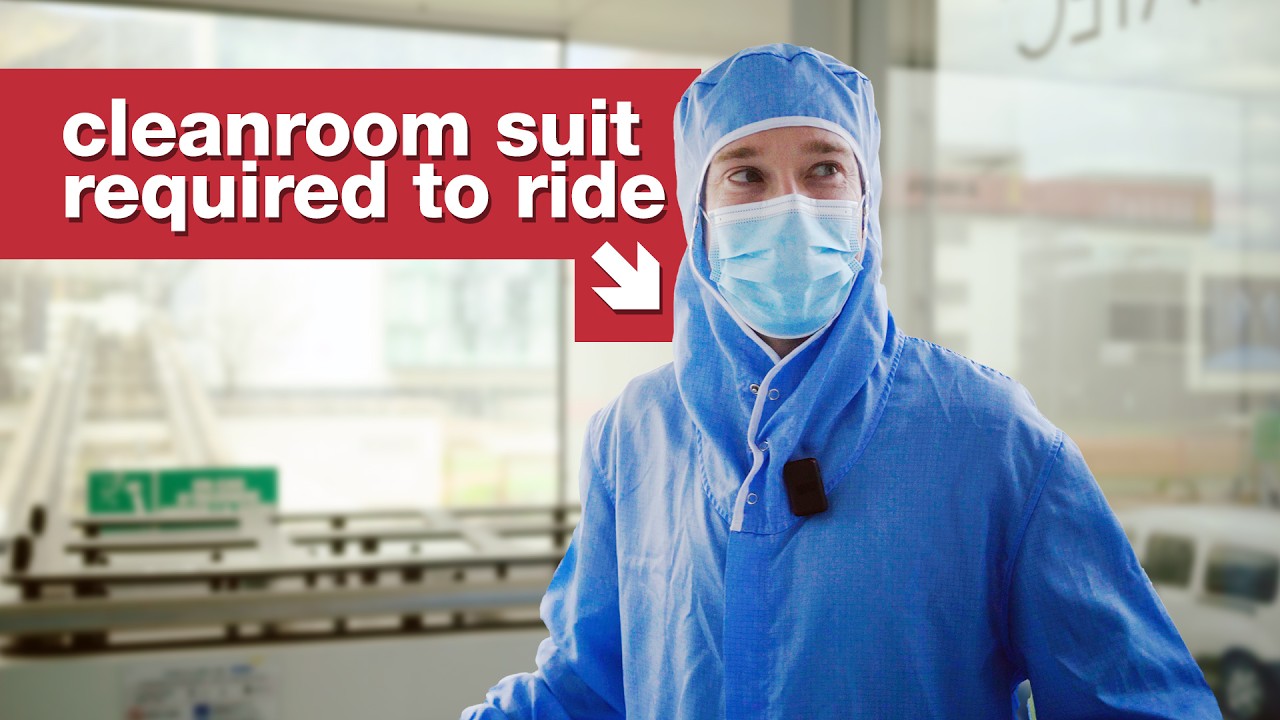What do you do when growth in your semiconductor facility forced you to split the clean room between two buildings?
I’m surprised that facial skin, eyebrows and eyelashes are permitted to be exposed. As far as I know, these are not privileged compared to other skin and hair. Facial skin and hair shed and fall out, too.
I have been involved in the design and build of class 10000 cleanrooms (nor more than 10,000 particles/cubic ft >0.5 um and 70 particles/cubic ft >5 um). Typically you would have multiple transitions as materials and people move from a normal environment into more and more stringent environments. In the case of the video, I think the actual wafer work is being done in a much more stringent environment. One that would not accept the exposed skin. I think the wafer work was being done inside another “box” (you can see this in the video) such that the human in the “bunny suit” does not enter or come in contact with that environment. Imagine you have a very clean box with no particles and the environment surrounding the box is like downtown San Fran. If you open that box and let San Fran in, it may take forever to get it back to a very clean state.
In our case, we could not economically enclose the entire continuous manufacturing process in a separate box, but we would enclose unit operations in a class 100 (no more than 100 particles/cubic ft <0.5 um) surrounded by the class 10,000 space and hold positive pressure in that box relative to the surrounding space. In our case, we knew the big control handles such as unit operation isolation, proper air flow design, etc. Many controls including human controls where a lot more subjective. How much does the “bunny suit” help? How much does an airlock help? How important is it to eliminate horizontal surfaces? It is an endless list of design considerations that can be painful when trying to balance effectiveness and cost.
When we would put the human in that “bunny suit” near the particle counter, the counts would explode. We used constant clean filtered air that flowed from the process towards the human or from the ceiling down across the human in an attempt to quickly remove particles shed and provide isolation of the process from the human.
